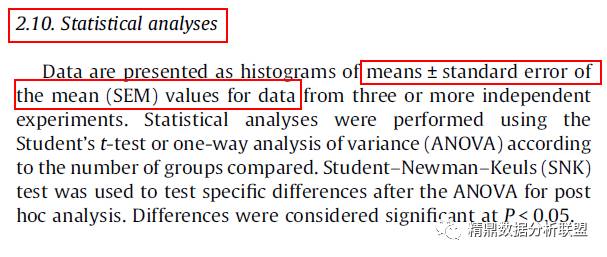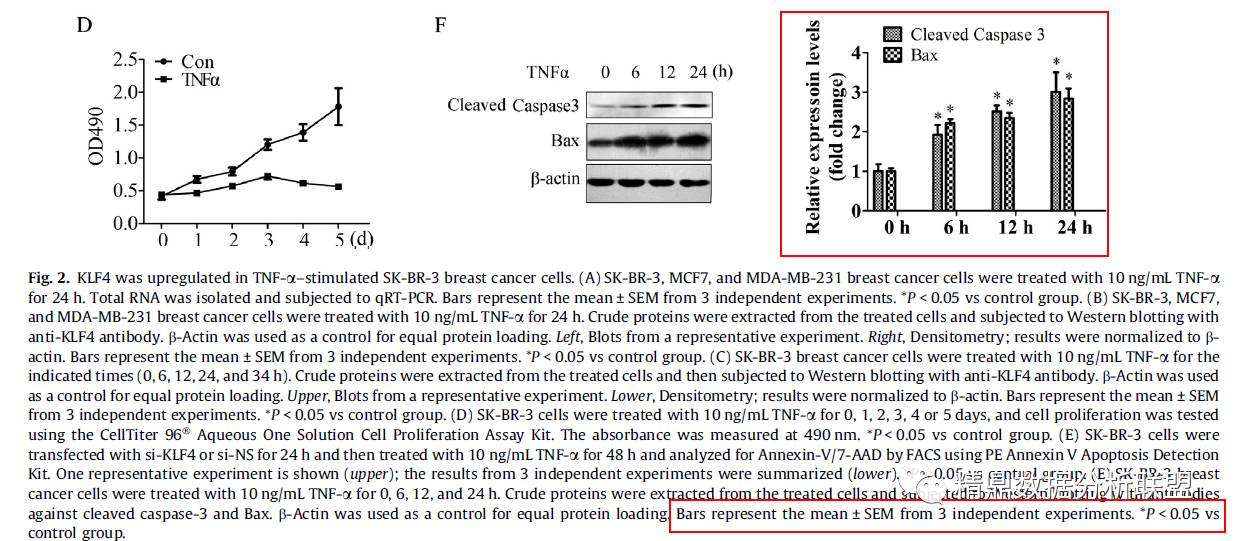一、mean±SEM
即均数加减标准误,前者表示定量资料抽样分布的均数的分布情况。意即这种表述主要想表达的是总体均数的分布情况。
二、mean±SD
即均数加减标准差,表示定量资料(满足或近似满足正态分布)的个体测量值的分布情况,意义完全不同。
三、关系
SE=SD/sqrt(n),因此SE将永远小于SD。
四、误用
国内一些学者,生怕自己用mean±SD,SD太大,说明自己数据同质性不好,就采用mean±SEM,因为SEM永远小于SD,所以感觉数据好漂亮,其实自欺人,数据好坏就在哪里!
五、外文解释
The standard deviation, or SD, measures the amount of variability or dispersion for a subject set of data from the mean, while the standard error of the mean, or SEM, measures how far the sample mean of the data is likely to be from the true population mean. The SEM is always smaller than the SD. The formula for the SEM is the standard deviation divided by the square root of the sample size.
六、额外声明
很多SCI论文期刊,指明自己的期刊应该采用mean±SEM,那你就按照该杂志要求处理。

七、松哥统计说
mean±SD反应数据个体测量值的分布;mean±SEM反映样本均数分布情况。结合近年的经验,松哥认为,如果研究目的是为了了解单组数据的分布,则应该采用mean±SD;如果目的是为了研究抽样均数的总体均数估计、或者是组间均数的比较,则应该采用mean±SEM。如下图右边柱状图,为组间均数比较,采用的就是mean±SEM。


 2020-03-21
2020-03-21












